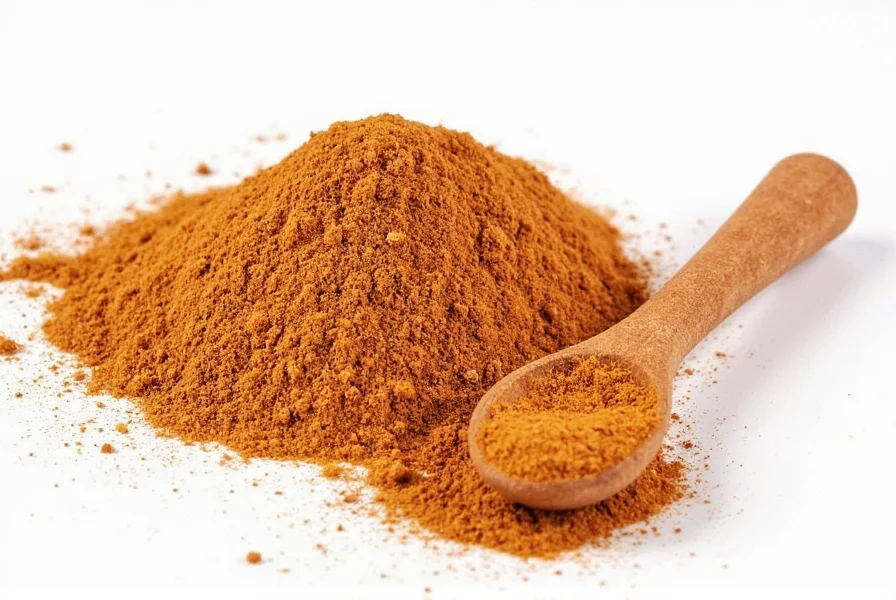Table of Contents
What Is Cinnamon Sawdust?
Cinnamon sawdust is not a food product. It is a byproduct of industrial processing of cinnamon bark, typically used in woodworking or non-food applications. When cinnamon trees are processed for wood-related purposes, the fine shavings or dust produced are called cinnamon sawdust. This material is not intended for human consumption and may contain impurities, dust particles, or chemicals that could be harmful if ingested.

Why It's Not Safe for Consumption
Cinnamon sawdust should never be consumed. Unlike food-grade cinnamon powder, it is not processed under food safety standards. Industrial cinnamon sawdust may contain:
- Wood particles and contaminants from processing equipment
- Chemical residues from non-food-grade treatments
- Microscopic dust that can cause respiratory issues if inhaled
- Potential heavy metals or pesticides not removed during industrial processing
Food safety authorities like the FDA and EFSA explicitly state that wood dust is not approved for human consumption. Consuming cinnamon sawdust could lead to digestive issues, allergic reactions, or long-term health risks.
Cinnamon Sawdust vs. Cinnamon Powder
| Characteristic | Cinnamon Sawdust | Cinnamon Powder (Food-Grade) |
|---|---|---|
| Source | Industrial processing waste from cinnamon bark | Specifically cultivated and processed for food use |
| Processing Standards | No food safety regulations applied | Follows FDA/EFSA food safety protocols |
| Intended Use | Woodworking, industrial applications only | Culinary, pharmaceutical, and food products |
| Contaminant Risk | High (wood particles, chemicals, heavy metals) | Low (strict quality control) |
| Regulatory Approval | Not approved for human consumption | Approved for food use globally |
Safe Alternatives for Cooking
If you want to use cinnamon in cooking, always choose food-grade cinnamon powder. Here's what to look for:
- Check Labels: Look for "food-grade," "cinnamon powder," or "ground cinnamon" on packaging
- Source Quality: Choose products from reputable spice brands with clear sourcing information
- Ceylon vs. Cassia: Ceylon cinnamon ("true cinnamon") has lower coumarin levels and is safer for regular consumption
- Storage: Keep in airtight containers away from light and moisture to maintain freshness
For smoking meats or culinary applications, use food-grade wood chips specifically designed for cooking (like applewood or hickory), not cinnamon sawdust.
Common Misconceptions
- "Cinnamon sawdust is just finely ground cinnamon": False. Cinnamon powder is made from specially processed bark, while sawdust is industrial waste material.
- "It's safe in small amounts": Dangerous myth. Even tiny amounts of industrial wood dust can contain harmful contaminants.
- "It's used in some traditional recipes": No credible traditional recipes use cinnamon sawdust. Authentic cinnamon use always involves food-grade powder.
Frequently Asked Questions
Is cinnamon sawdust safe to eat?
No, cinnamon sawdust is not safe for consumption. It is an industrial byproduct that may contain wood particles, chemicals, and contaminants not approved for food use. Always avoid ingesting it.
Can I use cinnamon sawdust for smoking meats or infusing oils?
No. Cinnamon sawdust is not designed for culinary use. For smoking meats or infusing oils, use food-grade wood chips specifically manufactured for cooking applications.
What's the difference between cinnamon sawdust and cinnamon powder?
Cinnamon sawdust is industrial waste from bark processing, while cinnamon powder is food-grade spice made from specially prepared cinnamon bark. Cinnamon powder undergoes strict food safety processing, while sawdust does not.
Does cinnamon sawdust contain coumarin?
Cinnamon sawdust is not intended for consumption, so coumarin content is irrelevant. However, industrial cinnamon sawdust may contain unknown contaminants that pose greater health risks than coumarin.
How should I store cinnamon sawdust?
Cinnamon sawdust should be stored away from food and living areas, typically in industrial settings. Never store it near food products. If you encounter it accidentally, dispose of it properly without contact.
Can I make my own cinnamon sawdust at home?
Do not attempt to create cinnamon sawdust at home. Industrial processing involves specialized equipment that cannot be safely replicated in home settings. Home attempts would create unsafe products.
Conclusion
Cinnamon sawdust is strictly an industrial material with no place in food preparation. It is not safe for consumption, cooking, or any culinary application. Always choose food-grade cinnamon powder for cooking needs, and verify product labels for proper food safety certification. When in doubt about any ingredient, consult food safety authorities or professional chefs for guidance.











 浙公网安备
33010002000092号
浙公网安备
33010002000092号 浙B2-20120091-4
浙B2-20120091-4